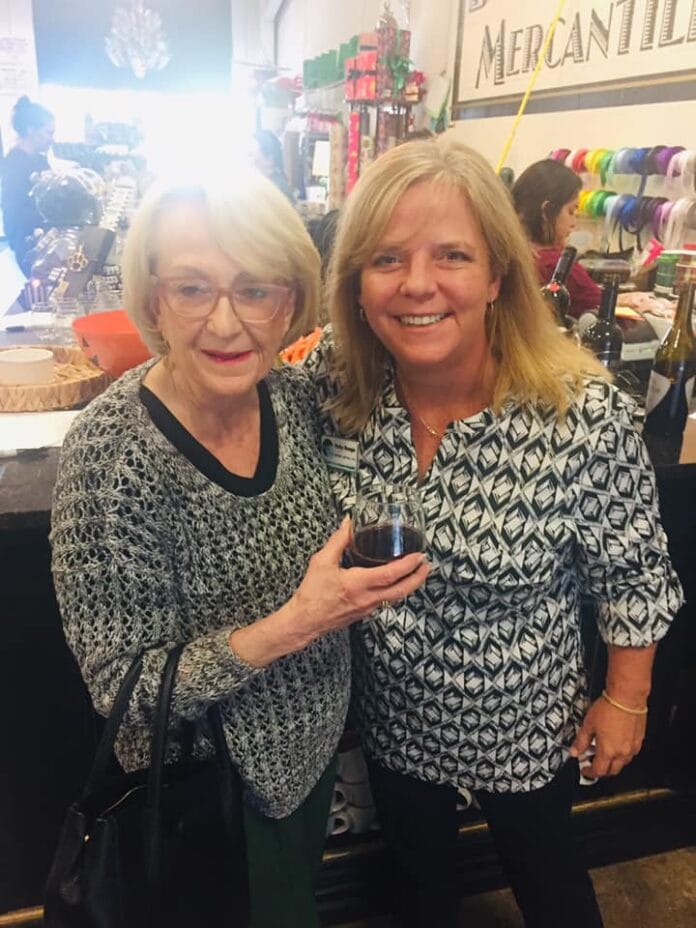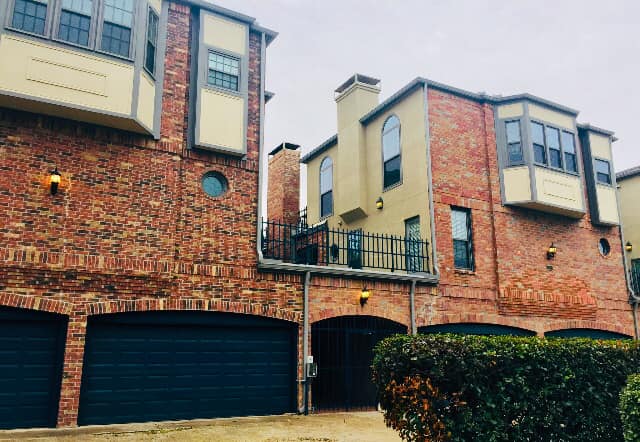
Many “Baby Boomers” are taking advantage of the sky-high prices their homes are now appraising for and are selling. But finding a smaller home at a good price, or a condo or apartment to rent, has slowed this trend for many in their retirement years.
Judy Pollock knows this firsthand.
One Woman’s Journey
Judy Pollock has lived in many places, but her most recent move a few months ago was the most stressful.
Born in San Francisco, Judith Sosnowski grew up with Russian and Polish grandparents, and spoke both languages as a child.
Raised in Chicago, she went on to college at the University of Illinois where she earned a degree in Business, and then a Master of Education. Her first job out of college was as a Junior High school counselor.
Her husband accepted a position at Wake Forest in North Carolina where he worked mainly in research, and then they came to Dallas when he was offered a position with Kenneth Cooper to begin working in his Aerobics Center. He was considered an expert in this field of aerobics and health.
Judy had a career in the Arts and was an executive of Pier One. At one point she worked in New York with the Head of the American Council for the Arts but moved a few years later because “I was earning about thirty thousand a year and spending about sixty thousand,” she admits with a laugh. “It didn’t seem sustainable,” so she returned to Dallas briefly and then on to Florida in 2003.
Back in Dallas, she bought a home in Lakewood for a few years, lived in an apartment off Northwest Highway, and finally settled into her home in Oak Cliff a dozen years ago. “I always loved Oak Cliff and was happy to move there.”
Over the years she added a screened porch and deck to her home so she could enjoy the outdoors. Her home had been a part of the Oak Cliff Home Tour in 2014 and featured this year in April in the Oak Cliff Advocate. But she admitted the maintenance of the ¾ of an acre of land her home sat on was too much to maintain. Last year she decided it was time for her to downsize, and spend her afternoons leisurely enjoying her life, not working hard out in the yard.
“If it was just the house, it would have been okay,” she says, “But to maintain the yard, trim the bushes, the trees. It was too much.” Fortunately, friends of hers had been looking for a home to buy for six month and at one point even said, “I wish we could find a house like Judy’s.” Right before the couple made an offer on a home in Wynnewood North, they saw Judy’s home listed for sale on Realtor.com – and that there was on Open House. They drove right over and made an offer.
“It was a God thing,” Judy is convinced.
Now an Architect and Marketing Technology executive enjoy her fashionable home, and Judy’s been invited back to visit already.
The Big Move
After a dozen years in a large house, it typically takes months to clear out the contents of a home, but Judy’s background in business helped. She had been thinking about selling for a while, so had begun culling things she no longer used to make her future move easier. In one quick week she had things wrapped up. She had an Open House party for her neighbors on a Thursday, followed by an estate sale Friday, Saturday, and Sunday. Anything left that she wasn’t taking with her was picked up by a scheduled charity on Tuesday.
She kept the furniture she wanted for her apartment, along with her boxed up belongings, ready to move into her next home, an apartment in Oak Cliff. All was well. She was ready!
And then she got an e-mail from the management.
Disaster Lurks
Six days before the movers where scheduled to pick up her things, an email came that said her apartment wouldn’t be ready for another five weeks. Management said the previous resident had left the apartment in such bad shape, that Judy couldn’t move in as planned. “But the apartment was less than 1,100 square feet,” Judy explains, “and I had a contractor I knew who could get that space fixed up.” She suggested this solution to the management.
“But that wasn’t going to work,” she was told next, this time via a call. “They said they had a big Bed Bug problem in that unit, so it would take a while to clear the bugs out.” And if that didn’t sound awful enough, the next call from the management said the apartment was so infested with roaches that none of the employees would even go in the apartment until they were all cleared out.
Judy found this news not just upsetting, but unreal. “How did someone live in there with both bed bugs and cockroaches?”
It appeared she was going to have to find another apartment immediately. She had less than a week. “I had to really scramble,” she said, and she began her search back at 21 Turtle Creek, where she one lived previously for five years. But there was nothing available.
She remembered the apartments she used to drive by in Oak Cliff on Perryton Drive near the Oak Cliff Nature Preserve and decided to check them out. Lincoln Properties had purchased them and updated the existing buildings. They advertise it as a fifty-five and older community. One unit was available, and Judy took it.

She believes God was looking out for her. “The only apartment offered to me by the place I’d planned to move into was on the third floor – with no elevator,” she says. “No way I was taking that at my age. But now I’m in a lovely place that is surrounded by trees, on the second floor with an elevator, and it’s cheaper by over $600 from the place I was originally going to rent.”
Many factors were working in her favor, she admits. She had savings from the sale of her home, she had already downsized her belongings, and she had no children or pets, which often causes restrictions for renters – often apartments have a no-pets policy or are not appropriate for families with small children. Judy, as a single adult, didn’t have to look for a child-and pet-friendly place. She also didn’t have to prove she had income, as many apartment management companies require. Her retirement savings were enough.
Availability of Apartments
Since COVID shut down many businesses last year, the gap between the rich and the poor is widening in Dallas-Fort Worth, but it is widening at a slower rate than in most major U.S. metro areas, according to Rentonomics.
Housing markets are worsening the gap between the rich and poor, the report concludes. Incomes are growing fastest at the top of the income distribution, but housing costs are growing fastest for the poorest families. Childcare, gasoline prices, food price increases all are making it harder for those with lower incomes to find an affordable place to live. For the retired on a fixed income, finding an affordable place to live becomes even more difficult.

Forty-five of the top fifty metro areas, including Dallas, have experienced growing income inequality according to Rentonomics’ data. And a housing shortage means apartment units are more in demand.Therefore management can increase rent due to a growing demand for them.
Houston has the highest inequality growth rate in the state, at 16.3 percent, ranking 11th among the top fifty metro areas. San Antonio and Austin appear to have better rent for those who have less income. Another recent study shows that wages have not kept up with housing costs in North Texas, and it’s especially hurting people who serve DFW communities. The study by Trulia used wage data to highlight who can afford a house. Teachers, first responders and restaurant workers have a tough time purchasing a home – or even renting an apartment.
Current Housing Prices Too High For Many – Event Teachers
First Grade DISD teacher Olivia Nicole Davila is in a similar housing dilemma to many in the DFW area. She says, “I’m so frustrated with apartment hunting. My lease is up at the end of January. My roommate and I are going our separate ways – she has a boyfriend now and wants her own place – understandable! That’s not the problem. The problem is there is literally nothing available to me within my means or what I’m willing to pay, for the amount of square footage.”
She continues: “I’ve been told by several complexes, ‘Sorry we have nothing available for the date you’re looking for,’ OR they say, ‘we have this available,’ but it’s an outrageous price OR it’ll be available AFTER my move out date. I don’t know what to do and I’m slowly panicking because I’m trying to get ahead on this since I teach and will be busy the next few weeks and I don’t want to wait until Christmas break to try to find something. UGH!”
In Dallas-Fort Worth, the median home list price is currently $322,900. Teachers in Texas average about $55,000 annually so can afford only about 20% of available homes on today’s market. First responders are only slightly better off, able to purchase about 30% of available homes. And full-time restaurant workers can only afford less than 1% of the available homes in the Dallas area. (according to Trulia) The report defined “reasonably affordable” as spending 30 percent or less of one’s monthly income on housing.
DFW Needs A Homebuilding Boom for Middle and Lower Incomes
In April Zillow reported a slight 0.3 percent drop in home prices. The median home value in DFW is $243,900. The median U.S. home is worth $226,800, down 0.1 percent from March to April. Whereas the median value in Dallas is $214,400; in Fort Worth, it’s $197,400. In Arlington, the median home value is $207,900, while the median in Plano is $336,900.
Local officials agree a giant homebuilding boom, focused on middle- and lower-income earners in Dallas, is necessary. Only people with a large amount of savings – like Judy, a retiree with a lifetime of savings – can afford a typical home in Dallas. That is, if she could find one.
Judy is busy these days unpacking her boxes and volunteering in the Oak Cliff community. She feels fortunate that she found an even better place to live than she had initially contracted for. She knows she got lucky and feels for those people moving into the city with less savings than she has.
The saying, “Man plans, and God laughs,” rings true to her. But in her case, she admits happily her plans didn’t work out as she hoped – and is better off for it.
Downsizing? Looking for an apartment?
Need information about renting a home or apartment? There are many apartment locators in the DFW area. Google “Apartments for Rent” to see what is available. Most require a deposit of one month’s rent along with a month of rent. You may also need verifiable paychecks for the previous two to three months.










